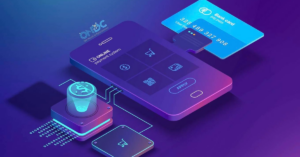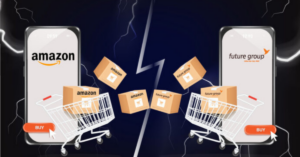Greg Moran and David Back, fellow students at the University of Pennsylvania, came to India from the US with the aim of starting a business and arrived at the idea for India’s first car rental startup, Zoomcar. Like for any startup across the globe, Greg and David came up with the idea of founding a car rental startup in India in 2015.
Today, Greg is the CEO and sole co-founder on board with David no longer a part of the company.
“I have always been passionate about sustainability and a shared model for sustainable economic development. While working in the clean technology and infrastructure disciplines for an investment bank, I witnessed first-hand the opportunities that existed in working for environmentally sustainable solutions in India. Exploring it further revealed the challenges in urban transportation, especially the lack of infrastructure that can cushion the hike in personal vehicles,” says Greg.
Greg Moran, Co-founder and CEO, Zoomcar
Realising the absence of a self-drive model in the market, Greg spearheaded the launch of Zoomcar. The startup has seen a steady rise in demand for cars for personal work and emergency use cases. Greg explains the team has witnessed a 2x jump in short term rentals compared to the same period last year, and the startup has also seen a 100 percent recovery from the end of October 2021.
However, COVID-19 did change the dynamics of the economy and every industry has had to adapt itself to the new normal. The car rental industry, to that end, has been. well-equipped and prepared to serve its customers. There is an exponential spike in demand expected for car subscriptions, especially considering the current recession, and under the circumstances, car rental subscriptions can prove to be a better option than ride-hailing. The model is also seen as a more affordable and quicker way of acquiring a car, delivering a safe personal mobility replacement.
In further proof of how popular the model is, Zoomcar recently launched in Southeast Asia and the Middle East/North Africa (MENA) MENA regions. The startup realised that Indonesia, the Philippines, Vietnam, Egypt and Saudi Arabia also have very low levels of vehicle ownership but large, upwardly mobile populations that prefer to opt for car rentals.
In a conversation with YS, Greg explains more about the fascinating tech journey of the startup, and how it acquired the distinction of being a tech-led company.
YS (YS): From a pureplay car rental company to a tech-led company, tell us about Zoomcar’s growth and evolution?
Greg Moran (GM): Zoomcar launched India’s first car-sharing platform in 2013, and is the dominant market leader in the car-sharing ecosystem today with approximately 10,000 cars on its platform and a presence across Southeast Asia and the MENA region. Zoomcar allows individuals to rent from a diverse pool of cars by the hour or by the day.
Headquartered in Bangalore India, Zoomcar employs over 300 people and operates in over 50 cities. In 2020, Zoomcar launched Zoomcar Mobility Services, an enterprise SaaS-based mobility solution offering white-labelled subscription services and IoT-based driver behaviour monitoring solutions.
YS: How exactly does the technology work? What are the problems it solves? Growth numbers, initial days, and evolution?
GM: A car is an important asset to us and tracking its location and health is a business necessity. We have built an intelligent tool called Cadabra that tracks important data about the car in real-time. Cadabra tracks the distance travelled, fuel used, clutch performance, etc. and helps car owners or drivers keep tabs on important performance metrics like clutch position, harsh braking, inconsistent acceleration, seat belt usage and engine health, among others.
Equipped with Bluetooth and 4G connectivity, Cadabra receives OTA updates and also connects with emergency services in case of on-road accidents. With this monitoring system, Zoomcar ensures driver safety by sending speeding alerts or any rash driving activity. The alert system is voice-activated and embedded in the audio system, and plays the warning “you need to slow down your speed, over speeding is dangerous.”
The real-time collision detection system inside the car monitors the possibility of collision. If you are about to collide at high speed, it alerts the driver about the momentum. We have data insights on the fuel requirement of the car. With the AI system, we analyse the refill time and suggest the nearest fuel pumps. This feature helped us gain trust while micro-managing customer challenges and maintaining a hassle-free driving experience.
As the journey nears completion, Zoomcar analyses the current geolocation, distance and time required to reach the drop location of the car. The advantage of a device like this is that it can be customised for each car as is required for the business.
Zoomcar monitors and generates data every second to understand driving patterns — whether the driver is speeding, applying hard brakes or driving rashly. We realised that Indian drivers are more aggressive on the road with rental cars and are prone to drive rashly.
To manage this customer nature, we developed a system known as Driver Score powered by AI. It identifies critical events of driving and rates it on a scale of 0-100. The scoring system has capabilities to give real-time feedback to drivers in the advent of rash driving to help them adjust their behaviour accordingly.
Within the first month of its launch, the driver score has successfully reduced the accident rate by 20 percent, and maintenance and servicing cost by 25 percent for Zoomcar. The data generated from the vehicle movement helps us to understand driver behaviour. With real-time monitoring, we have alerts for the driver which help customers get control over the car at the right time and prevent accidents.
YS: Tell us about Zoom Driver Behaviour Intelligence? What was the first product (app) like? How did you build it? (How did you get the necessary human resources and technological tools initially?) How much time did it take? (To make the first prototype)
GM: ZMS Driver Behaviour Intelligence was conceptualised to harness the IoT expertise Zoomcar has developed from the very beginning of its consumer-facing business. We realised it was important for the safety of our customers to continually assist them in real-time while they were driving. The app took inputs from phone and vehicle sensors and communicated clearly to the driver on behaviour patterns, alerting them constantly.
As a result, along with our customers’ safety, we also managed to reduce accidents, harsh events, service and maintenance costs and benefited from increased mileage of the vehicles. Our product and development teams continuously work on enhancing customer experience at every stage, and the Driver Behaviour Intelligence is a major step towards ensuring not only safer roads but better asset utilisation as well. The first prototype of the Driver Behaviour Intelligence was a result of over 2 billion km of data and 6 million customer transactions on our platform, which enabled the teams to achieve highly accurate algorithms while calculating harsh events and driving scores.
YS: What were the core factors you kept in mind to build a scalable MVP and what were your learnings from it that led to the evolution of the product? How long did this run for?
GM: The core factors for a scalable MVP for this product were very clear to us as we were the first users of this app. Tracking driving behaviour in a very non-intrusive way without the use of expensive OBDs was our priority, followed by accuracy in driving behaviour data. The first product was implemented in 2017, in the Zoomcar marketplace for customers who were opting for short-term rentals.
It was a great add-on for the users to understand how they were driving, and it gamified the entire experience by introducing leaderboards of the best drivers in the city and the country as well. Today, we are witnessing a connected vehicle ecosystem where it’s essential to not only inform a customer but to also engage and interact with them.
Through various in-built gamification algorithms, we not only keep the customers motivated but also use it as feedback to continuously improve the product. Today, there are different industries in the mobility domain like insurance companies, fleet operators, leasing companies etc. who we are working with to implement this product in their ecosystems.
YS: How did you come across some great growth hacks that complemented the scaling of tech?
GM: The only growth hack we had to aid to scale this tech was our database collected over the past nine years. Around 2 billion km and 6 million transactions on our platform provided us with a variety of driving behaviours across geographies and cities to continuously improve on the accuracy of the driving score and make it as robust as it is today.
YS: What were the challenges while building the system? It must have been a challenge to add more components on top, while subsequently ensuring that you had to manage scale as well. Did you have to let go of any legacy beliefs and systems?
GM: We actually had a lot of fun building the product and getting it to its primal form today. There were definitely challenges on various fronts like keeping the user engaged, working on real-time alerts to the driver and capturing the trips in a contextual manner (in-city roads or highways, car driving or bike riding etc), but our legacy of being a market leader in shared mobility helped us tremendously in ensuring that we were able to quickly build and test various functionalities of the app.
The massive amount of driving data definitely aided in ensuring that we were not starting from scratch on each of these fronts, and had a good head start owing to our shared mobility ecosystem.
YS: What are the other interesting/innovative technological solutions you found in the process?
GM: Zoomcar is a dominant market leader in the shared mobility ecosystem today with an 80 percent market share in self-drive rental space. While we are working on various solutions to continuously improve the customer experience and customer journey, we have developed many interesting solutions and today Zoomcar Mobility Services is a separate B2B enterprise solution vertical of Zoomcar offering 10+ products in the space of subscription, rental, insurance, leasing, fleet and IoT.
YS: Tell us about the future plans and innovations you are looking at?
GM: Zoomcar has recently launched India’s first car-sharing marketplace – a vehicle host programme that will enable individual vehicle owners to list their cars on Zoomcar and earn a revenue share on each booking rental. India currently possesses one of the lowest private car utilisation rates in the world and through our host programme, we seek to transform this idle vehicle capacity to create better utilisation.
At scale, we expect this programme to dramatically reduce on-road congestion and urban air pollution. Our mission is to democratise car access across the world’s high growth urban centres.
India will remain our largest market for the indefinite future. The new host programme is just another example of our commitment to creating localised solutions for urban mobility challenges in India. As a platform, our primary problem statement is that we want to have as much supply in the marketplace and have as much diverse vehicle choices as possible. With the vehicle host programme, we will get significantly more supply of cars, which would result in more transaction volume and more users. We are investing heavily in international growth, IT, and tech infrastructure.

![You are currently viewing [Product Roadmap] How Zoomcar brought in technology to become a niche in the car rental segment](https://blog.digitalsevaa.com/wp-content/uploads/2022/03/GregMoran-1646104436067.jpeg)








